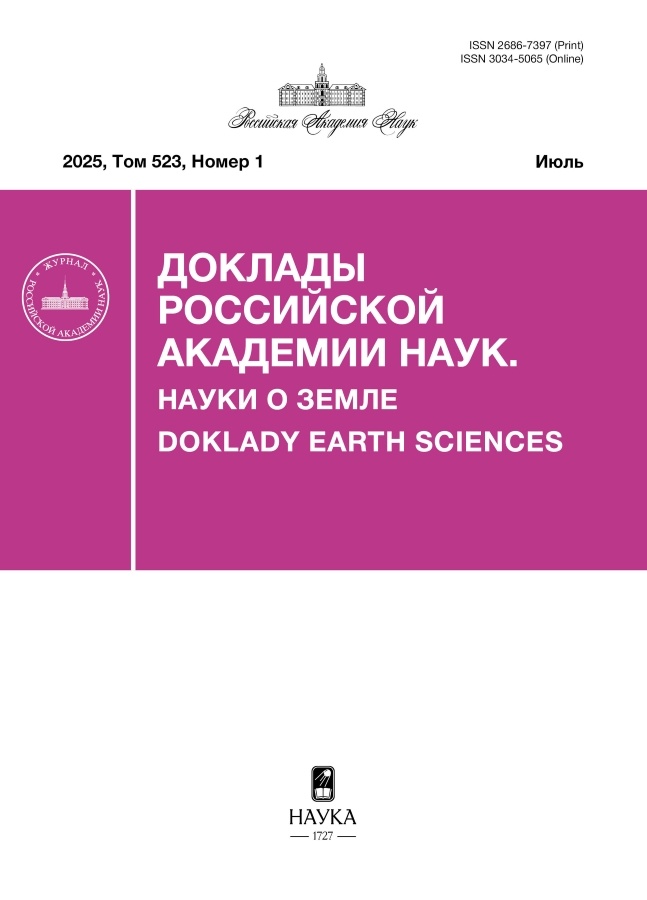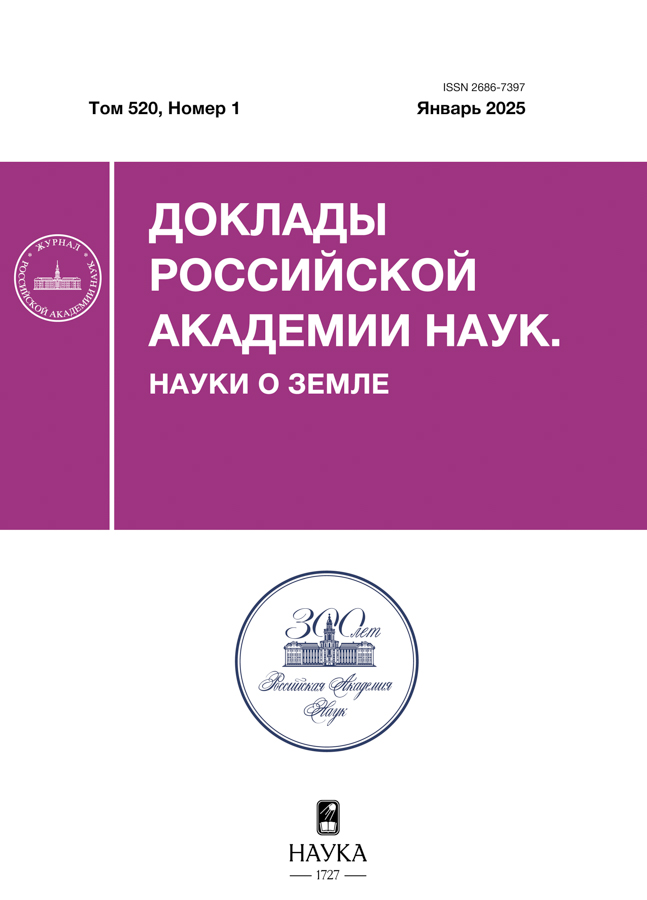Влажность разрыва капилляров почв и её определение
- Авторы: Федотов Г.Н.1, Шоба С.А.1, Горепекин И.В.1, Сухарев А.И.1, Тарасенко Д.А.1, Шваров А.П.1, Тюгай З.1
-
Учреждения:
- Московский государственный университет им. М.В. Ломоносова
- Выпуск: Том 520, № 1 (2025)
- Страницы: 175-180
- Раздел: ПОЧВОВЕДЕНИЕ
- Статья получена: 03.06.2025
- Статья опубликована: 30.05.2025
- URL: https://transsyst.ru/2686-7397/article/view/682420
- DOI: https://doi.org/10.31857/S2686739725010209
- EDN: https://elibrary.ru/GUOSJD
- ID: 682420
Цитировать
Полный текст
Аннотация
Влажность разрыва капилляров характеризует нижнюю границу области наиболее продуктивной для растений влаги. Анализ экспериментальных методов определения влажности разрыва капилляров свидетельствует об их трудоёмкости и низкой производительности. Целью исследования являлась разработка высокопроизводительного и точного метода определения влажности разрыва капилляров. В работе использованы 18 образцов различных почв. Для определения влажности разрыва капилляров предложен метод, в ходе которого образцы почв помещали в воронку Шотта, увлажняли избытком воды, после чего откачивали воду при помощи водоструйного насоса. По мере удаления воды из образца увеличивался интервал между каплями, падающими с воронки. Индикатором конца эксперимента считали скачок в интервалах между падением капель. Эксперименты показали, что влажность разрыва капилляров почв по методу вакуумирования коррелирует с рассчитанными по наименьшей влагоёмкости почв (по Долгову) значениями на 87%. Значения влажности разрыва капилляров, полученные методом секущих (по Воронину) для некоторых из почвенных образцов, не выпадают из полученной зависимости. При помощи метода было показано, что высушивание почв приводит к уменьшению величины измеряемой влажности разрыва капилляров. Предложено объяснение результатов с позиции наличия в почвах органоминеральных гелей.
Полный текст
Об авторах
Г. Н. Федотов
Московский государственный университет им. М.В. Ломоносова
Автор, ответственный за переписку.
Email: gennadiy.fedotov@gmail.com
Россия, Москва
С. А. Шоба
Московский государственный университет им. М.В. Ломоносова
Email: gennadiy.fedotov@gmail.com
член-корреспондент РАН
Россия, МоскваИ. В. Горепекин
Московский государственный университет им. М.В. Ломоносова
Email: gennadiy.fedotov@gmail.com
Россия, Москва
А. И. Сухарев
Московский государственный университет им. М.В. Ломоносова
Email: gennadiy.fedotov@gmail.com
Россия, Москва
Д. А. Тарасенко
Московский государственный университет им. М.В. Ломоносова
Email: gennadiy.fedotov@gmail.com
Россия, Москва
А. П. Шваров
Московский государственный университет им. М.В. Ломоносова
Email: gennadiy.fedotov@gmail.com
Россия, Москва
З. Тюгай
Московский государственный университет им. М.В. Ломоносова
Email: gennadiy.fedotov@gmail.com
Россия, Москва
Список литературы
- Еремин Д. И., Шахова О. А. Динамика влажности чернозема, выщелоченного при различных системах обработки под яровую пшеницу в условиях Северного Зауралья // Аграрный вестник Урала. 2010. № 1 (67). С. 38–40.
- Шеин Е. В. Курс физики почв. М.: Изд-во Моск. Ун-та, 2005. 430 с.
- Novák V., Hlaváčiková H. Applied soil hydrology. Cham, Switzerland: Springer, 2019. 342 p.
- Вадюнина А. Ф., Корчагина З. А. Методы исследования физических свойств почв и грунтов. 2-е изд. М., 1973, 1969. 399 с.
- Воронин А. Д. Структурно-функциональная гидрофизика почв. М.: Изд-во Моск. Ун-та, 1984. 204 с.
- Честнова В. В. Реологические свойства черноземов типичных курской области: взаимосвязь с физическими свойствами и основной гидрофизической характеристикой / Дис. … канд. биол наук: 06.01.03. М., 2017. 116 с.
- Методическое руководство по изучению почвенной структуры / Под ред. И. Б. Ревута, А. А. Роде. Л.: Колос, 1969. 528 с.
- Шеин Е. В., Архангельская Т. А., Гончаров В. М., Губер А. К., Початкова Т. Н., Сидорова М. А., Смагин А. В., Умарова А. Б. Полевые и лабораторные методы исследования физических свойств и режимов почв: методическое руководство. М.: Изд-во Моск. Ун-та, 2001. 200 с.
- Федотов Г. Н., Шеин Е. В., Ушкова Д. А., Салимгареева О. А., Горепекин И. В., Потапов Д. И. Надмолекулярные образования из молекул гуминовых веществ и их фрактальная организация // Почвоведение. 2023. № 8. С. 903–910.
- Тюлин А. Ф. Органно-минеральные коллоиды в почве, их генезис и значение для корневого питания высших растений. М.: Изд-во АН СССР, 1958. 52 с.
- Angelico R., Colombo C., Di Iorio E., Brtnický M., Fojt J., Conte P. Humic substances: from supramolecular aggregation to fractal conformation – Is there time for a new paradigm? // Appl. Sci. 2023. V. 13. № 4. P. 2236.
- Оsterberg R., Mortensen K. Fractal dimension of humic acids. A small angle neutron scattering study // Eur. Biophys. J. 1992. V. 21. № 3. P. 163–167.
- Senesi N., Rizzi F. R., Dellino P., Acquafredda P. Fractal humic acids in aqueous suspensions at various concentrations, ionic strengths, and pH values. Colloids and Surfaces A // Physicochemical and Engineering Aspects. 1997. V. 127. Iss. 1–3. P. 57–68.
- Senesi N., Rizzi F. R., Dellino P., Acquafredda P. Fractal dimension of humic acids in aqueous suspension as a function of pH and time // Soil Science Society of Am. J. 1996. V. 60. № 6. P. 1613–1678.
- Милановский Е. Ю. Гумусовые вещества почв как природные гидрофобно-гидрофильные соединения. М.: ГЕОС, 2009. 186 с.
- Старцев В. В., Дымов А. А. Амфифильные свойства и водорастворимые компоненты органического вещества почв приполярного Урала // Почвоведение. 2021. № 12. С. 1492–1505.
Дополнительные файлы















